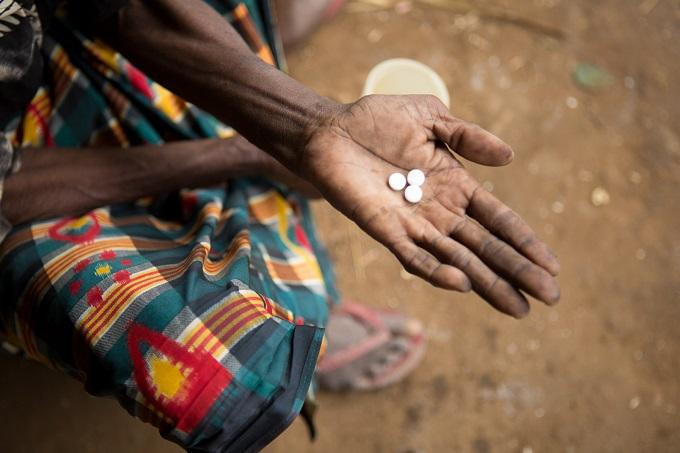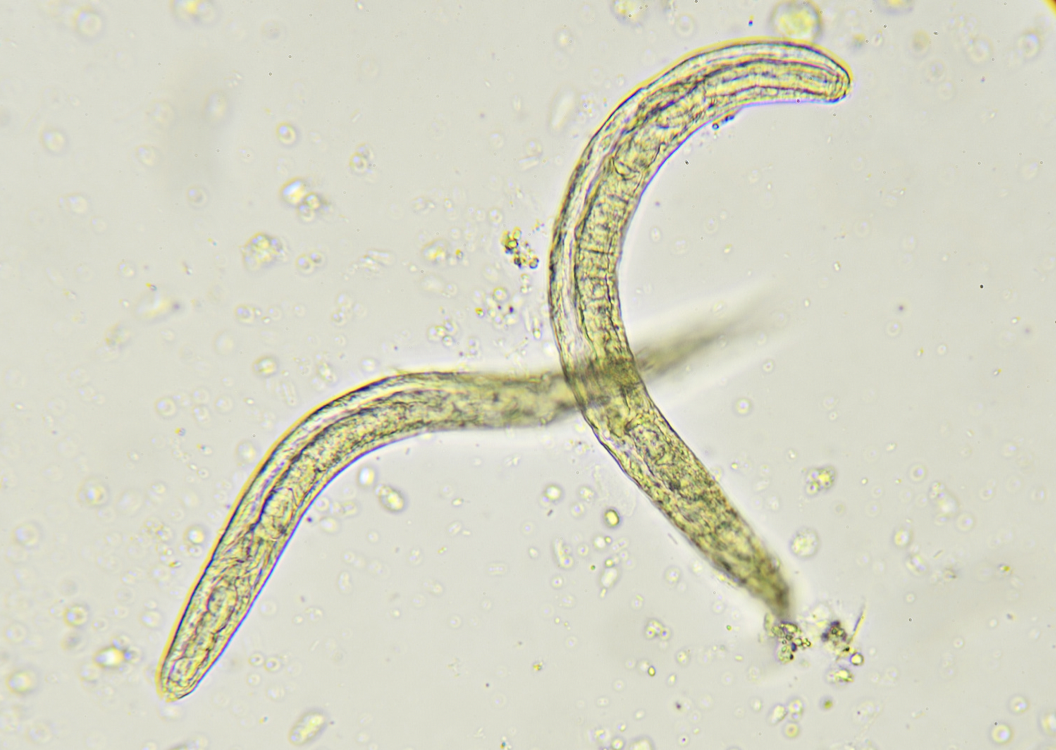Definisi
Cacing tambang termasuk parasit. Parasit memerlukan inang makhluk hidup lainnya untuk berkembang biak. Dalam tubuh manusia, cacing tambang dapat menimbulkan gejala pada organ paru, kulit, dan usus kecil. Manusia tertular cacing tambang melalui larva cacing yang ditemukan di tempat yang terkontaminasi oleh tinja.
Menurut Pusat Pengendalian dan Pencegahan Penyakit, infeksi cacing tambang terjadi pada sekitar 576-740 juta orang di seluruh dunia. Infeksi ini terutama mempengaruhi orang-orang di negara berkembang dan di daerah tropis atau subtropis karena sanitasi yang buruk.
Penyebab
Terdapat dua jenis cacing tambang yang menyebabkan infeksi, yaitu:
- Necator americanus
- Ancylostoma duodenale
Telur cacing tambang akan berkembang di tanah setelah melewati kotoran manusia. Telur menetas menjadi larva yang tinggal di tanah sampai memiliki kesempatan untuk menginfeksi manusia dengan cara menembus kulit.
Anda dapat terinfeksi cacing tambang jika terpapar dengan tanah yang mengandung larva cacing. Larva dapat menembus kulit dan masuk ke aliran darah menuju ke paru. larva akan naik ke saluran pernapasan atas dan apabila pasien batuk, parasit akan tertelan masuk ke saluran cerna. Larva dapat perkembang dan menetap di usus kecil selama satu tahun atau lebih, sebelum keluar melalui tinja.
Jika hewan peliharaan terinfeksi, Anda bisa tertular secara tidak langsung. Telur akan keluar melalui kotoran hewan peliharaan dan menetas menjadi larva. Telur dan larva ditemukan di tanah tempat hewan meninggalkan tinja. Anda bisa tertular infeksi cacing tambang jika menyentuh kotoran yang terkontaminasi tersebut dengan menggunakan tangan atau kaki telanjang.
Untuk mengurangi risiko infeksi cacing tambang, pastikan hewan peliharaan Anda divaksin dan diberi obat cacing oleh dokter hewan. Hindari juga berjalan tanpa alas kaki di area hewan peliharaan sering meninggalkan kotoran. Hal ini penting dilakukan terutama ketika Anda mungkin bersentuhan dengan kotoran hewan peliharaan yang kondisi kesehatannya tidak diketahui, seperti di taman.
Faktor Risiko
Faktor risiko penyakit cacing tambang adalah:
- Tinggal di lingkungan dengan sanitasi yang buruk
- Tinggal di lingkungan dengan akses air bersih yang terbatas
- Populasi dengan tingkat pendapatan dan tingkat pendidikan yang rendah
- turis internasional dan pengungsi
- Anak kecil yang kontak dengan tanah atau pasir
- Daerah dengan iklim hangat. Cacing lebih senang berkembang pada tanah yang hangat dan lembab. Suhu optimal untuk telur cacing adalah sekitar 20-30oC, meskipun A duodenale menyukai suhu yang lebih rendah daripada N americanus. Larva gagal berkembang pada suhu di bawah 13oC. Telur yang sudah menetas dan larva baru akan mati pada suhu di bawah 6-8oC dan di atas 45oC. Telur dan larva juga mati oleh pengeringan dan sinar matahari langsung
- Memelihara hewan, terutama anak anjing dan kucing
Gejala
Awalnya, infeksi mungkin tidak bergejala, jika jumlah parasit di dalam tubuh rendah, terbiasa makan makanan dengan kandungan zat besi tinggi atau jika terinfeksi saat kondisi tubuh prima. Namun, apabila terinfeksi dengan jumlah parasit yang tinggi atau saat kondisi imun tubuh lemah gejala yang mungkin timbul adalah:
- rasa gatal dan ruam kecil di kulit. hal ini dikarenakan reaksi alergi di area tempat larva masuk ke kulit
- Diare
- Nyeri perut
- Kram perut
- Menangis berlebihan pada bayi
- Mual
- Demam
- BAB berdarah
- Nafsu makan menurun
- Ruam gatal
Diagnosis
Dokter akan melakukan wawancara mendalam mengenai gejala, kebiasaan yang berkaitan dengan faktor risiko dan riwayat perjalanan Anda. Selanjutnya akan dilakukan pemeriksaan fisik secara lengkap. Jika terdapat gejala penyakit cacing tambang, dokter akan menyarankan untuk melakukan:
- Pemeriksaan tinja. Sampel tinja diperiksa di bawah mikroskop untuk mencari telur cacing tambang
- Pemeriksaan darah. Pemeriksaan darah lengkap dapat menunjukkan peningkatan sel darah putih jenis eosinofil. Sel eosinofil merupakan penanda alergi dan infeksi cacing. Eosinofilia dapat ditemukan beberapa minggu sebelum telur berkembang di tinja
Tata Laksana
Pengobatan penyakit cacing tambang bertujuan untuk:
- Menghilangkan parasit cacing. Dokter akan meresepkan obat cacing, seperti albendazole dan mebendazole yang biasanya diminum sekali untuk mengobati infeksi
- Memperbaiki gizi. Dokter akan membantu Anda untuk pulih dari kondisi kekurangan nutrisi. Jika terdapat kecurigaan komplikasi, dokter akan meminta Anda untuk menambahkan asupan protein ke dalam diet Anda
- Mengatasi komplikasi anemia. Dokter akan menyarankan Anda untuk mengkonsumsi suplemen zat besi jika Anda menderita anemia
Komplikasi
Paparan intens pada parasit akan menimbulkan kondisi parasitisme berat yang dapat menyebabkan:
- Perdarahan saluran cerna. Meskipun jarang terjadi, infeksi A. duodenale pada bayi baru lahir yang tertular melalui proses menyusui ASI dapat menyebabkan perdarahan saluran cerna yang berat
- Anemia. Anemia terjadi ketika cacing tambang menghisap darah dan mengambil makanan yang terkandung dalam darah. Anemia ditandai dengan jumlah sel darah merah yang rendah. Anda lebih berisiko mengalami anemia berat jika Anda tidak makan dengan baik, sedang hamil, atau menderita malaria
- Gagal jantung. Anemia yang parah dapat menyebabkan gagal jantung.
- Kekurangan nutrisi, keterlambatan pertumbuhan dan perkembangan. Dalam sebuah penelitian, anak-anak dengan infeksi cacing dan anemia 8,7 kali lebih berisiko mengalami keterlambatan pertumbuhan dan 4,3 kali lebih mungkin mengalami penurunan berat badan dibandingkan anak-anak tanpa anemia dan infeksi
- Mengalami penumpukan cairan di rongga perut (asites). Kondisi ini disebabkan oleh kehilangan protein dalam jumlah yang banyak
- Penurunan daya pikir dan produktivitas. Penyebab penurunan ini antara lain karena anemia, kekurangan zat besi kronis dan kekurangan protein
Pencegahan
Anda dapat mengurangi risiko terinfeksi cacing tambang dengan:
- Memakai sepatu ketika Anda berada di luar rumah, khususnya di daerah yang mungkin terdapat kotoran hewan di tanah
- Minum air yang bersih
- Membersihkan dan memasak makanan hingga matang
- Mencuci tangan dengan benar, terutama sebelum makan dan setelah buang air
- Perbaikan sanitasi pada daerah yang banyak terjadi infeksi cacing tambang. Perbaikan sanitasi termasuk menggunakan sistem pembuangan limbah yang baik
Beberapa negara berkembang memberikan obat pencegahan pada kelompok yang berisiko tinggi terkena infeksi. Kelompok ini antara lain:
- Anak-anak
- Wanita usia subur
- Wanita hamil
- Wanita menyusui
- Orang yang karena pekerjaannya berisiko terkena infeksi cacing berat
Kapan Harus ke Dokter?
Anda harus berkonsultasi dengan dokter jika memiliki keluhan:
- Ruam gatal di kaki
- Penurunan berat badan tanpa sebab yang jelas
- Penurunan nafsu makan
- Kelelahan atau pusing
Mau tahu informasi seputar penyakit lainnya? Cek di sini, ya!
- dr Ayu Munawaroh, MKK
Delgado A. (2019). Hookworm infections. Retrieved 3 January 2022, from https://www.healthline.com/health/hookworm
Smith DS. (2021). Hookworm disease. Retrieved 3 January 2022, from https://emedicine.medscape.com/article/218805-overview
Hookworm disease. (2021). Retrieved 3 January 2022, from https://my.clevelandclinic.org/health/articles/14072-hookworm-disease#diagnosis-and-tests












